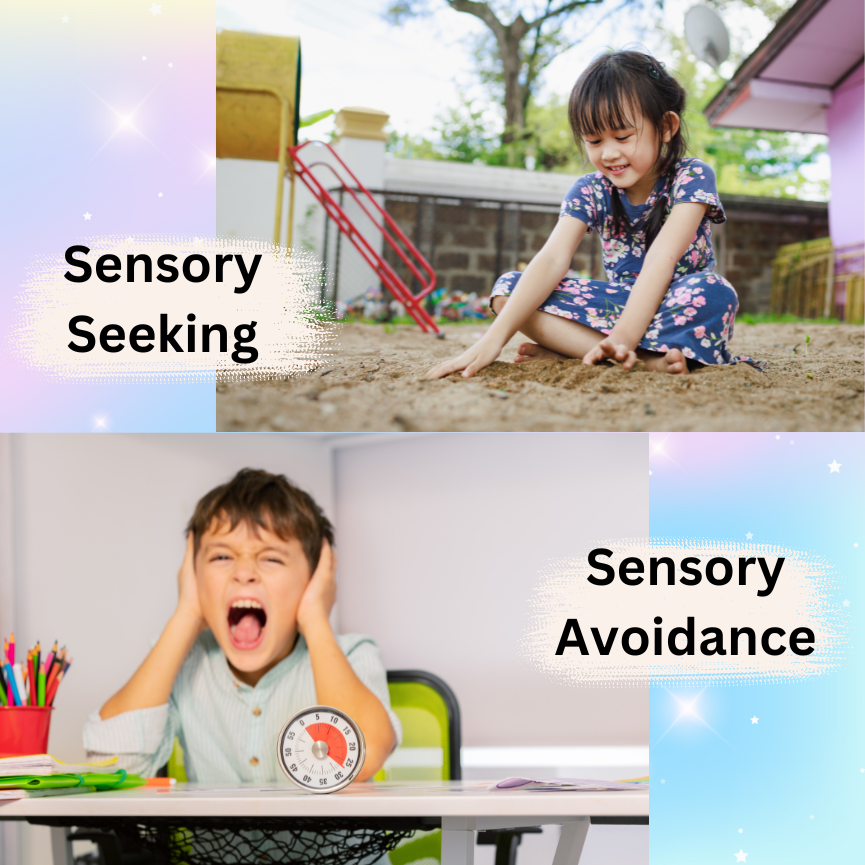
- May 18, 2024
- 179 Views
- 0 Comments
Discover The World Of Sensory Avoidance And Sensory Seeking
In today's fast-paced world, sensory avoidance and sensory seeking behaviors have gained recognition as crucial elements in understanding human behavior. These behaviors, which encompass a wide range of actions and reactions, play a significant role in how individuals perceive and interact with their environment. This article aims to delve into the intricacies of sensory avoidance and sensory seeking behaviors, shedding light on what they entail, why they occur, and how they impact our daily lives.
Sensory avoidance and sensory seeking behaviors are intrinsic to the human experience. These behaviors encompass how we react to various sensory stimuli, such as touch, taste, sound, smell, and sight. While some individuals may actively seek out sensory experiences, others go to great lengths to avoid them. Understanding the underlying mechanisms of these behaviors is crucial for improving our overall well-being and optimizing our daily lives.
Defining Sensory Avoidance
Sensory avoidance refers to the act of deliberately minimizing exposure to sensory stimuli. Individuals exhibiting sensory avoidance behaviors may be hypersensitive to certain sensations, finding them overwhelming or discomforting. As a result, they actively try to avoid situations or environments that trigger these sensations.
Understanding Sensory Seeking
On the flip side, sensory seeking behaviors involve actively seeking out sensory experiences. Those who engage in sensory seeking may have a lower sensitivity threshold, and they often crave intense sensory input to feel engaged and satisfied. This behavior can manifest in various forms, such as seeking out spicy foods, enjoying loud music, or indulging in adrenaline-pumping activities.
The Sensory Processing Spectrum
Sensory processing behaviors exist on a spectrum, with avoidance and seeking behaviors at opposite ends. Most individuals fall somewhere in between, exhibiting a mix of avoidance and seeking tendencies depending on the context and their sensory needs.
Common Triggers for Sensory Avoidance
Sensory avoidance can be triggered by a multitude of factors, including crowded places, certain textures, strong odors, and bright lights. Individuals with sensory processing disorders, such as autism or sensory processing disorder (SPD), often experience heightened sensory sensitivities.
Factors Influencing Sensory Seeking
Sensory seeking behaviors can be influenced by various factors, including genetics, upbringing, and individual preferences. Some individuals are naturally inclined toward seeking sensory stimulation, while others may develop these behaviors as a coping mechanism.
Sensory Avoidance vs. Sensory Overload
It's important to distinguish between sensory avoidance and sensory overload. Sensory avoidance is a proactive strategy to prevent sensory discomfort, while sensory overload occurs when an individual is exposed to an excessive amount of sensory input, leading to feelings of overwhelm and distress.
Sensory Seeking and Creativity
Interestingly, sensory seeking behaviors have been linked to increased creativity. Individuals who actively seek out novel sensory experiences may have a heightened ability to think outside the box and come up with innovative ideas.
Sensory Behaviors in Children
Children often exhibit sensory avoidance and sensory seeking behaviors as they explore the world around them. Understanding these behaviors in children can help parents and caregivers provide appropriate support and create a nurturing environment.
Impact on Mental Health
Unmanaged sensory avoidance and sensory seeking behaviors can have a significant impact on mental health. Individuals who struggle with these behaviors may experience anxiety, stress, or social isolation. Recognizing and addressing these issues is vital for overall well-being.
Coping Strategies for Sensory Avoidance
There are several effective coping strategies for sensory avoidance, including mindfulness techniques, sensory-friendly environments, and gradual exposure therapy. These strategies can help individuals manage their sensitivities and engage more comfortably with the world.
Harnessing Sensory Seeking for Productivity
Sensory seekers can leverage their tendencies for increased productivity. Creating a sensory-friendly workspace or incorporating sensory-rich experiences into their routines can enhance focus and creativity.
Sensory Integration Therapy
For those with sensory processing disorders, sensory integration therapy can be a game-changer. This therapeutic approach aims to improve sensory processing abilities and help individuals better regulate their responses to sensory stimuli.
Real-life Success Stories
Numerous individuals have embraced their sensory tendencies and turned them into assets. From artists and musicians to entrepreneurs and athletes, real-life success stories demonstrate the power of understanding and harnessing sensory behaviors.
In conclusion, sensory avoidance and sensory seeking behaviors are integral aspects of human existence. Recognizing and comprehending these behaviors is crucial for fostering a more inclusive and accommodating society. By embracing our unique sensory preferences and learning how to navigate them, we can lead happier and more fulfilling lives.



Comments - 0 comments till now